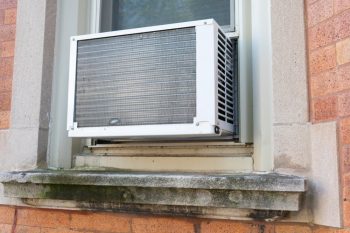
A pressure washer hose is an important component of your pressure washer system. It is the link between the washer and the spray gun, and it carries the water under high pressure from the washer to the gun. Over time, a pressure washer hose can wear out, get damaged, or become less efficient due to constant exposure to high pressure and harsh chemicals. When this happens, it’s time to replace it. In this comprehensive guide, we’ll walk you through the process of replacing a pressure washer hose, from identifying the right replacement to the actual replacement process, troubleshooting, and maintenance tips.
To replace your pressure washer hose, start by turning off the pressure washer and disconnecting it from the power source. Release any residual pressure in the hose by squeezing the trigger on the spray gun. Then, use a wrench to disconnect the old hose from the pressure washer and the spray gun. Attach the new hose to the pressure washer and the spray gun, ensuring the connections are tight. Finally, turn on the pressure washer and test the new hose for any leaks or issues.
Signs That Your Pressure Washer Hose Needs Replacing
Knowing when to replace your pressure washer hose is crucial to maintaining the efficiency of your pressure washer. Here are some signs that indicate it’s time for a replacement:
- Leaks: If water is leaking from the hose, it’s a clear sign of damage.
- Visible wear and tear: Regularly inspect your hose for cracks, punctures, or other signs of wear and tear. If you find any, it’s time for a replacement.
- Changes in shape: If the hose has kinks or has changed its shape, it’s likely compromised.
- Damaged fittings: If the connections between the hose and your pressure washer or nozzle are damaged or loose, it’s time for a new hose.
- Low water flow rate or lack of power: A decrease in water flow rate or a lack of power could be due to a damaged hose.
- Noise issues: Unusual noises coming from the hose while using the pressure washer may indicate damage.
- Age: If the hose has been in use for a long time, it’s likely to need replacing.
Tools and Materials Needed for Replacement
Before starting the replacement process, make sure you have the following tools and materials:
- Replacement hose: Choose a hose that matches the pressure rating and diameter of your pressure washer.
- Gloves and safety glasses: Always prioritize safety when working with pressure washer equipment.
- Pliers or adjustable wrench: These tools will help you remove the old hose and attach the new one.
- Scissors or utility knife: You may need these to cut the old hose or trim the new one if necessary.
Steps to Replace the Pressure Washer Hose
Replacing a pressure washer hose is a straightforward process that involves a few steps.
- Turn off the pressure washer: Before removing the damaged hose, make sure to turn off the pressure washer and disconnect it from the power source.
- Release the pressure: Squeeze the trigger on the spray gun to release any residual pressure in the hose.
- Disconnect the old hose: Locate the connections where the hose is attached to the pressure washer and the spray gun. Use a wrench to loosen and unscrew the connections.
- Connect the new hose: Attach the new hose to the pressure washer and the spray gun using the appropriate fittings. Use a wrench to tighten the connections securely.
- Test the new hose: Turn on the pressure washer and test the new hose for any leaks or issues. If everything is working correctly, you have successfully replaced the pressure washer hose.
Troubleshooting Common Replacement Issues
When replacing a pressure washer hose, you may encounter some challenges. Here are some possible issues and how to resolve them:
- Leaks: Tighten all connections and inspect the hose for visible signs of damage.
- Low water flow rate: Check for any obstructions in the nozzle, hose, or pump, and resolve them accordingly.
- Noise issues: Purge the compressed air from the pressure washer pump before use.
- Lack of power: Ensure that the replacement hose is compatible with your pressure washer’s power rating.
Maintenance Tips to Prevent Frequent Hose Replacements
Regular maintenance can help extend the life of your pressure washer hose and prevent frequent replacements. Here are some tips:
- Regular inspection: Regularly inspect your hose for signs of wear, including cracks, tears, and punctures.
- Proper storage: Store your hose properly when not in use to protect it from damage.
- Regular reconnection: Disconnect and reconnect your hose at least twice a year to maintain the proper seal of the washer.
- Preventive maintenance: Identify all hoses in your plant, track their lifecycle, and analyze data to determine replacement intervals.
Replacing a pressure washer hose is a straightforward process if you have the right tools and follow the correct steps. By regularly inspecting and maintaining your hose, you can prolong its lifespan and maintain optimal performance of your pressure washer.
Frequently Asked Questions
Can I use any type of hose as a replacement for my pressure washer hose?
No, it’s important to use a hose that is specifically designed for pressure washers. These hoses are built to withstand high-pressure water flow. Ensure that the hose matches the pressure rating and diameter of your pressure washer.
How can I prevent kinks and changes in shape in my pressure washer hose?
To prevent kinks and changes in shape, always straighten your hose before use. Avoid stepping on it or subjecting it to unnecessary tension. Also, when storing your hose, coil it loosely rather than folding it sharply.
What should I do if the new hose is too long?
If the new hose is too long, you can cut it to the desired length using a utility knife or scissors. However, it’s usually better to have a longer hose as it provides more flexibility when using the pressure washer.
Can I repair a damaged pressure washer hose instead of replacing it?
While minor leaks and damages can be repaired using a hose repair kit, it’s usually not recommended. A repaired hose can fail under high pressure, potentially leading to injury or further damage to your equipment. It’s safer and more reliable to replace a damaged hose.
How often should I replace my pressure washer hose?
The frequency of replacement depends on how often you use your pressure washer and the conditions under which it’s used. However, if you notice any signs of wear and tear such as leaks, visible damage, or decreased performance, it’s time to replace the hose. Regular inspections and maintenance can help you determine when a replacement is necessary.












